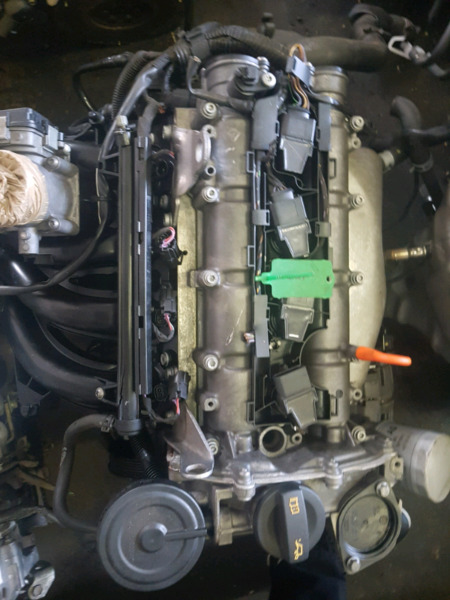Just How a Clp Engine Can Boost Efficiency in Numerous Industries
The advent of CLP engines notes a substantial change in functional effectiveness across different sectors, driven by their capacity to maximize gas usage and lessen downtime. As organizations increasingly prioritize sustainability together with efficiency, the function of CLP engines becomes also a lot more crucial.
Summary of CLP Engines
CLP engines, or Constant Liquid Propellant engines, stand for a substantial development in propulsion innovation, specifically for space applications. These engines make use of a continuous feed system that enables for the continual expulsion of propellant, resulting in enhanced efficiency and efficiency compared to conventional solid or hybrid propulsion systems. By preserving a continuous flow of fluid propellant, CLP engines can accomplish a lot more accurate drive control, which is vital for steering spacecraft in various goal circumstances.
The style of CLP engines incorporates advanced products and innovative gas management systems. clp engine. This results in decreased weight and enhanced reliability, important variables for long-duration room objectives. The continuous procedure reduces the danger of combustion instability, a typical difficulty in conventional rocket engines.

Benefits in Production
The production of Continual Fluid Propellant (CLP) engines offers a number of significant advantages that improve both effectiveness and cost-effectiveness. One of the key advantages is the streamlined production process, which minimizes the complexity connected with traditional propulsion systems. By making use of liquid propellant, manufacturers can accomplish better precision in engine efficiency, resulting in enhanced power result and reduced waste.
Additionally, CLP engines help with a greater level of modularity, permitting simpler assimilation right into numerous manufacturing lines. This adaptability can significantly decrease preparations and enhance total functional versatility. Using CLP innovation also often tends to minimize the demand for extensive maintenance due to fewer moving components, which converts into decreased downtime and functional expenses.

Applications in Logistics
Leveraging Continuous Liquid Propellant (CLP) engines in logistics provides substantial advantages in operational efficiency and dependability. These engines give a robust option for different transport needs, making it possible for the smooth motion of goods throughout huge ranges. The fundamental layout of CLP engines enables consistent power outcome, which equates into smoother and a lot more predictable transportation timetables.
One of the essential applications of CLP engines in logistics is in durable freight transportation, where they can drive both ground and aerial vehicles. Their capability to maintain high performance under differing tons problems ensures that delivery timelines are met, thereby improving consumer fulfillment. In addition, CLP engines can be incorporated right into automated logistics systems, assisting in real-time tracking and optimizing course planning.
Furthermore, the durability of CLP weblink engines minimizes maintenance downtime, enabling logistics companies to optimize their operational capacities. This is navigate to this site specifically beneficial in warehousing operations, where efficiency in dealing with and delivering items is crucial. As logistics remains to evolve, the combination of CLP engines stands for a forward-thinking strategy that not only improves performance but additionally sustains the industry's expanding demands for dependability and rate.
Effect On Energy Performance
Just How do Continual Fluid Propellant (CLP) engines improve energy effectiveness in transport? CLP engines use a consistent flow of fluid gas, enhancing burning procedures and maintaining a stable drive result. This style decreases power losses connected with conventional burning engines, where gas delivery can vary and lead to ineffectiveness.
The constant procedure of CLP engines enables for a much more effective thermal cycle, resulting in greater details impulse contrasted to traditional engines. clp engine. This translates to lowered fuel intake for the same amount of job done, dramatically lowering operational prices across different transport industries, consisting of air travel and maritime industries
Furthermore, the capacity of CLP engines to keep optimum performance under varying load conditions reduces the demand for constant acceleration and slowdown, further enhancing gas effectiveness. Enhanced energy effectiveness not just adds to cost savings however likewise leads to reduce greenhouse gas emissions, aligning with international sustainability goals.
Future Trends and Innovations
Emerging improvements in Continual Fluid Propellant (CLP) engine modern technology pledge to transform the landscape of transportation read this effectiveness and sustainability. As industries pivot towards greener choices, CLP engines stand at the forefront, incorporating ingenious products and style approaches that improve efficiency while reducing ecological effect.
Among the most promising trends is the fostering of hybrid systems that incorporate CLP engines with renewable resource sources. This synergy can enhance fuel consumption and decrease emissions, aligning with global sustainability objectives. Developments in computational fluid dynamics (CFD) are promoting the style of more aerodynamically effective engines, leading to reduced drag and enhanced fuel effectiveness.
In addition, the growth of wise monitoring systems is established to enhance operational effectiveness. These systems take advantage of data analytics and IoT technology to maximize engine performance in real-time, making certain that the engines run within their most reliable parameters.
As study continues to check out different propellant formulations-- such as biofuels and artificial fuels-- the future of CLP engines looks encouraging. By taking advantage of these innovations, sectors can not just enhance their effectiveness but likewise contribute significantly to a cleaner, extra sustainable future in transport.
Verdict
In conclusion, CLP engines stand for a substantial advancement in efficiency throughout numerous markets. Their capability to optimize gas consumption and decrease functional expenses, incorporated with a continual feed system, improves power output and functional dependability. The assimilation of advanced products and less relocating components lessens upkeep requirements, while alignment with sustainability objectives settings CLP engines as a pivotal technology for the future. Continued technology in this field promises further improvements in effectiveness and environmental efficiency.